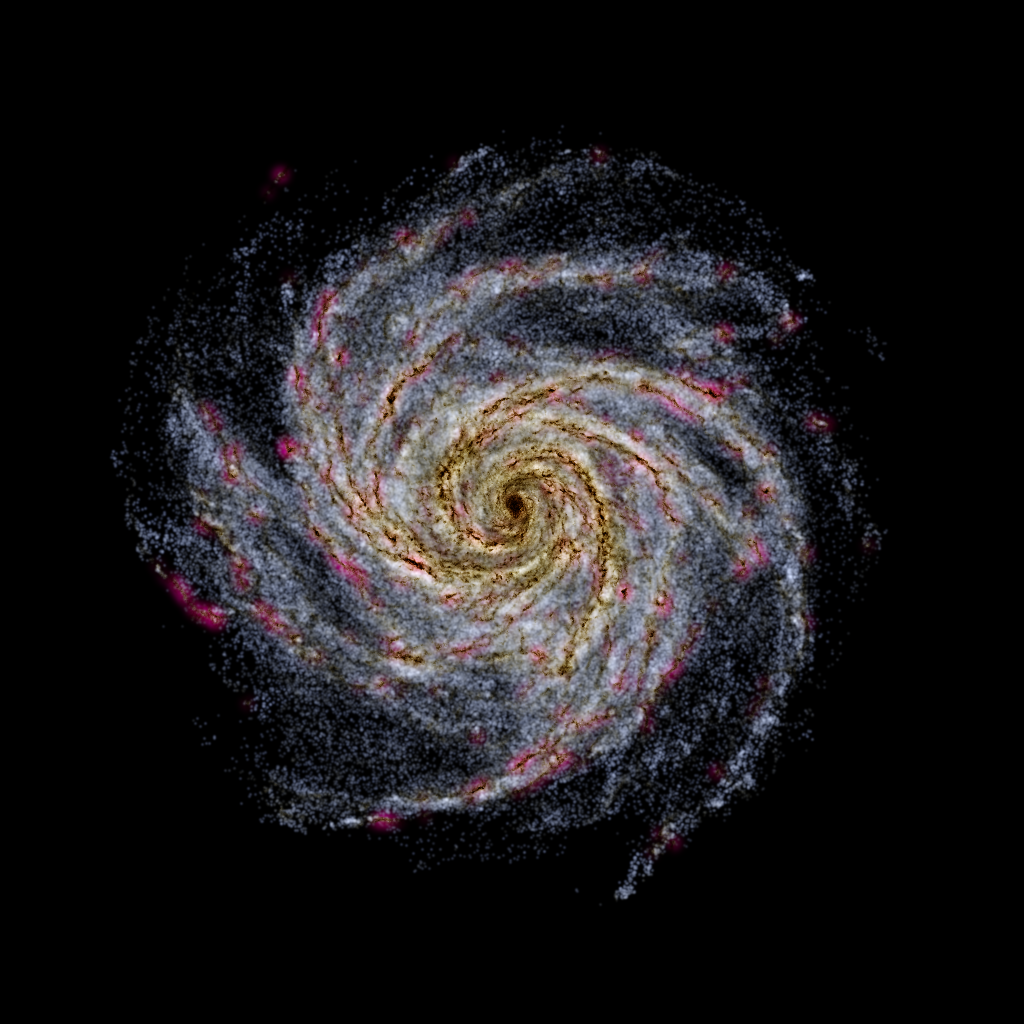Adding noise on surface brightness maps¶
The Mockimg module offers the possibility to add noise on a surface brightness image using the command
mockimgs_sb_add_noise:
mockimgs_sb_add_noise galaxy.fits.gz --SB_limit 31 --output-flux -o galaxy_with_noise.fits
where the option --SB_limit sets the targeted surface brightness limit, by default, assuming a signal to noise of 3
and a standard deviation computed in 100 arcseconds square.
While by default the output will be a surface brightness map (magnitudes), it is highly recommended to add
the option --output-flux to store the output as a flux. This will prevent problems with pixels with
a negative flux.
To display the output image, use mockimgs_sb_display_fits, for example:
mockimgs_sb_display_fits --add_axes --ax_unit kpc --colorbar --add_axes --colormap Greys --colormap_reverse galaxy_with_noise.fits.gz
Scripts¶
mockimgs_sb_add_noise¶
usage: mockimgs_sb_add_noise [-h] [--SB_limit FLOAT] [--SB_area FLOAT]
[--SB_SN FLOAT] [--sigma_per_pixel FLOAT]
[--random-seed INT] [--output-flux]
[--noise-only] [-v] [--zp FLOAT]
[-o OUTPUTFILENAME]
FILE
add noise on an sb image
positional arguments:
FILE input file
options:
-h, --help show this help message and exit
--SB_limit FLOAT surface brightness limit
--SB_area FLOAT area in arcsec2 to compute the SB limit
--SB_SN FLOAT targeted signal to noise
--sigma_per_pixel FLOAT
standard noise deviation per pixel
--random-seed INT random seed
--output-flux store flux assuming
--noise-only consider only noise
-v verbose mode
--zp FLOAT zero point to get flux
-o OUTPUTFILENAME Name of the output file
Examples:
--------
mockimgs_sb_add_noise in.fits -o out.fits
mockimgs_sb_add_noise in.fits --SB_limit 31 --output-flux -o out.fits
